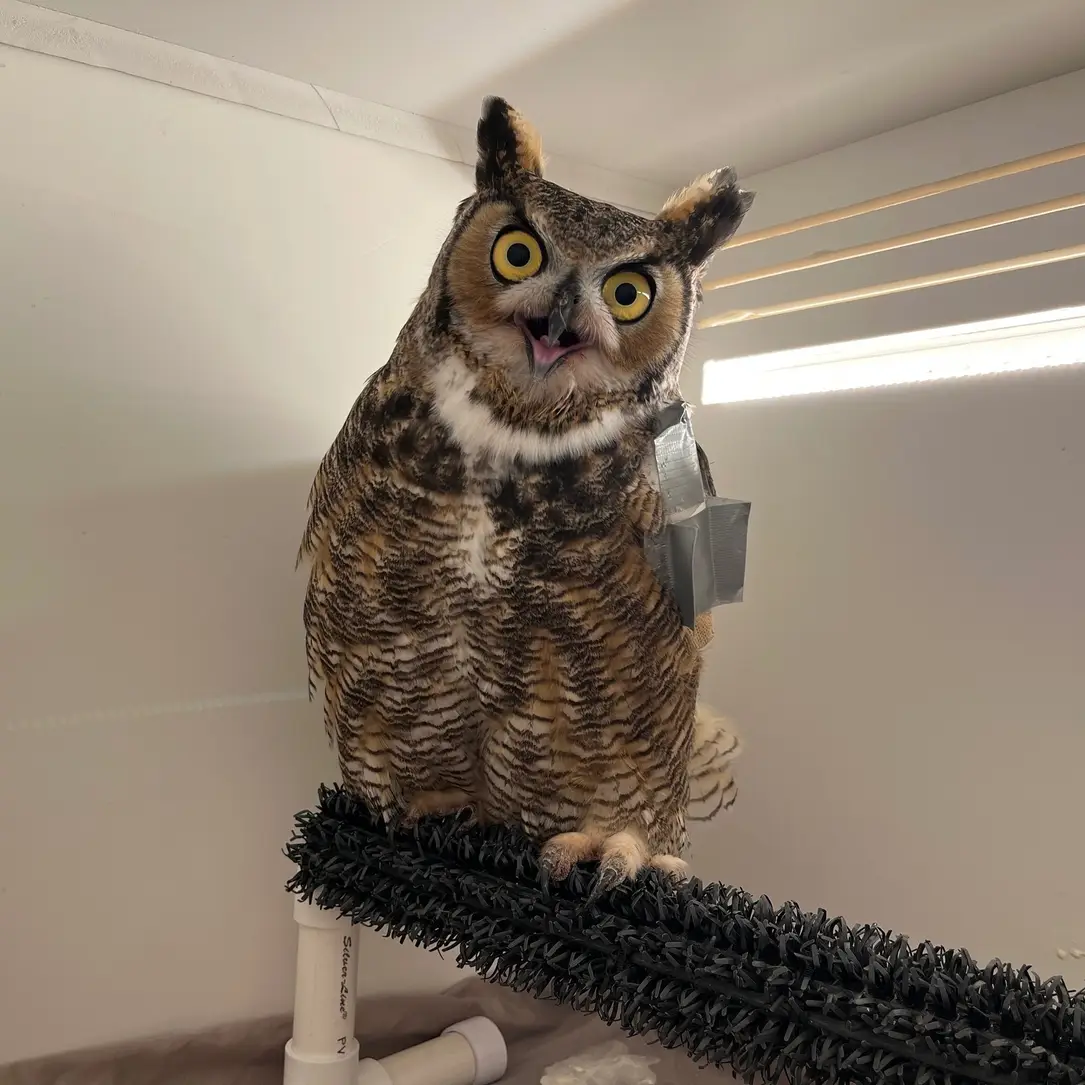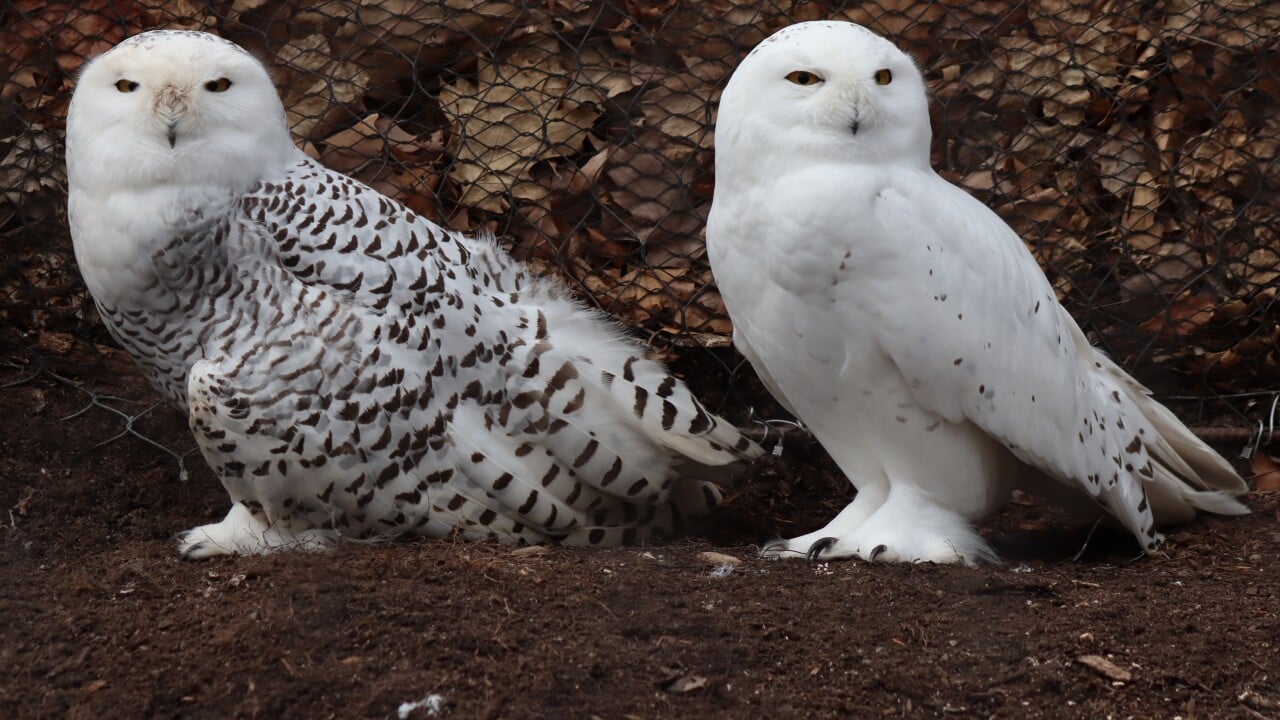From NM Wildlife Center
Most of the animals we admit to our hospital come to us because they have encountered one of the many anthropogenic, or human-caused, dangers in the wild. Great Horned Owl 24-910 is no exception: this bird suffered multiple injuries to his wings when he collided with a barbed wire fence. Barbed wire is dangerous to a lot of animals, but owls are especially susceptible. Most owls hunt in the dark or in very low light, and they fly low to the ground as they swoop down to catch their prey. A barbed wire fence can be nearly invisible in the dark and just the right height to snare a raptor as they fly down to catch their dinner.
The fence caused injuries to both of 24-910's wings. Since so much skin was damaged at the injury sites, it was not possible to simply sew the holes closed. Instead, Dr. Avery - with assistance from Wildlife Rehabilitation Manager Stephanie - carefully removed some healthy skin from an uninjured area near the owl's leg, sutured that area closed, and used the skin graft to patch one of the barbed wire injuries on 24-910's wing! The other injuries were patched in a similar way using a hydrocolloid wound dressing instead of a skin graft.
Just a few days after surgery, the skin graft site is healing well and so are the barbed wire injuries on 24-910's wings! The final photo in this series shows the area where the graft was applied and was taken just 4 days after surgery. Barbed wire injuries can be complex to treat and can involve damage to tendons, nerves, and other important structures, but so far we are pleased with 24-910's progress. As you can see in the first photo, this patient definitely still has the fierce attitude of a Great Horned Owl, which is a great sign!
I'll spare you guys the pokey pictures, but the recovery one was too good. The graft looked to be healing very well though, as they mentioned.


Score, Dr. Avery! (And Wildlife Manager Stephanie, of course)
NM Wildlife Center please get on the Owliverse! I mean Fediverse.
Speaking of doctor shout outs, I didn't think it was enough for a post, but I remember @homesweethomeMrL@lemmy.world had expressed interest in the teams taking care of Oz, the rare Pennsylvania Long Eared Owl with a broken wing. He is still doing well!
Good news! Attaboy Oz!
They did an amazing job! That fence really swiss cheesed this unlucky hooter.
I didn't see an update on it yet, but I was curious about the duct tape. Thankfully that was answered in an adjacent post on another bird:
"something to pick at"! Ahhhh - jenius!
Looks like even the smartest birds aren't too hard to trick with a little diversion. 😜
Whatever keeps them happy and healthy!